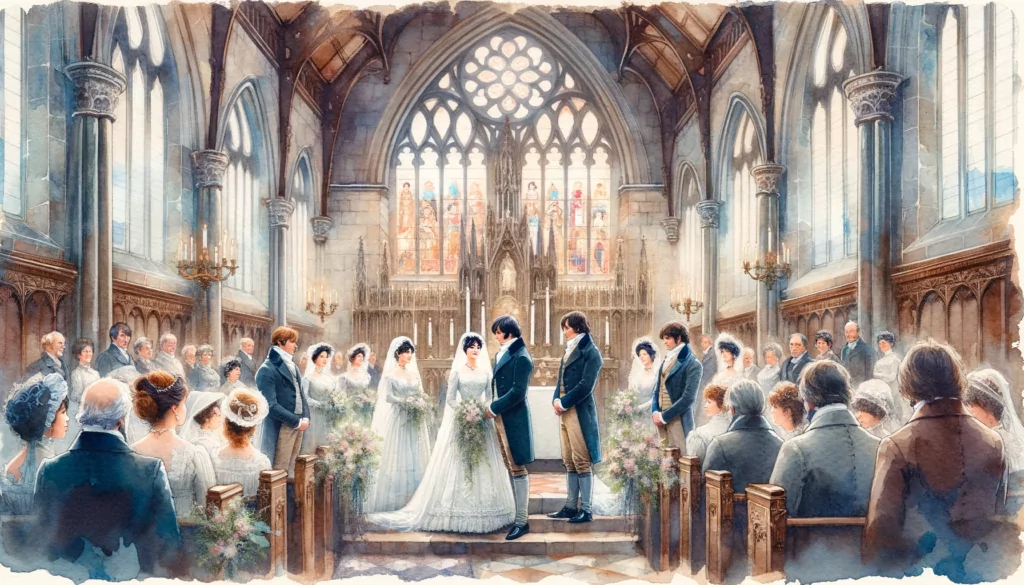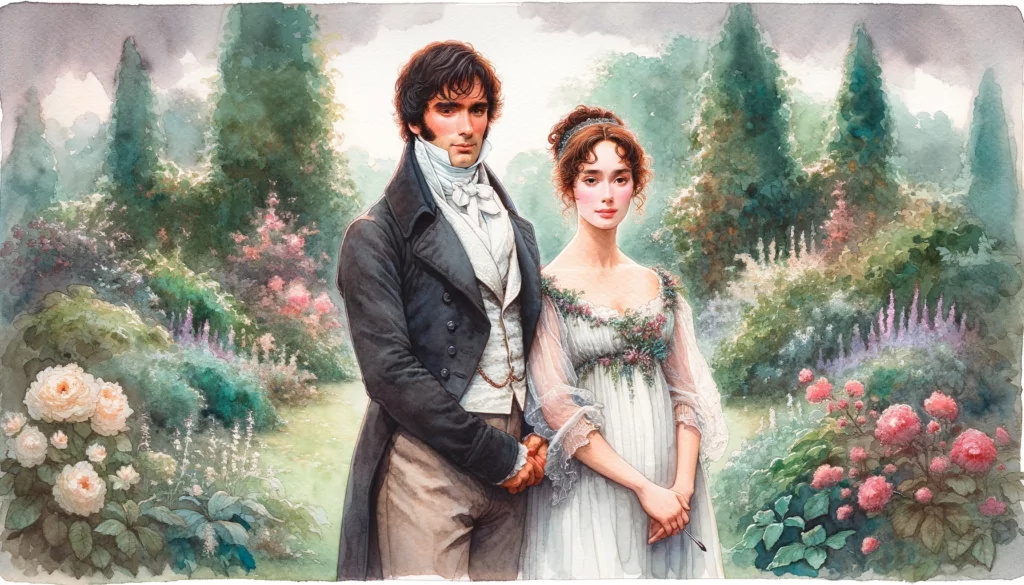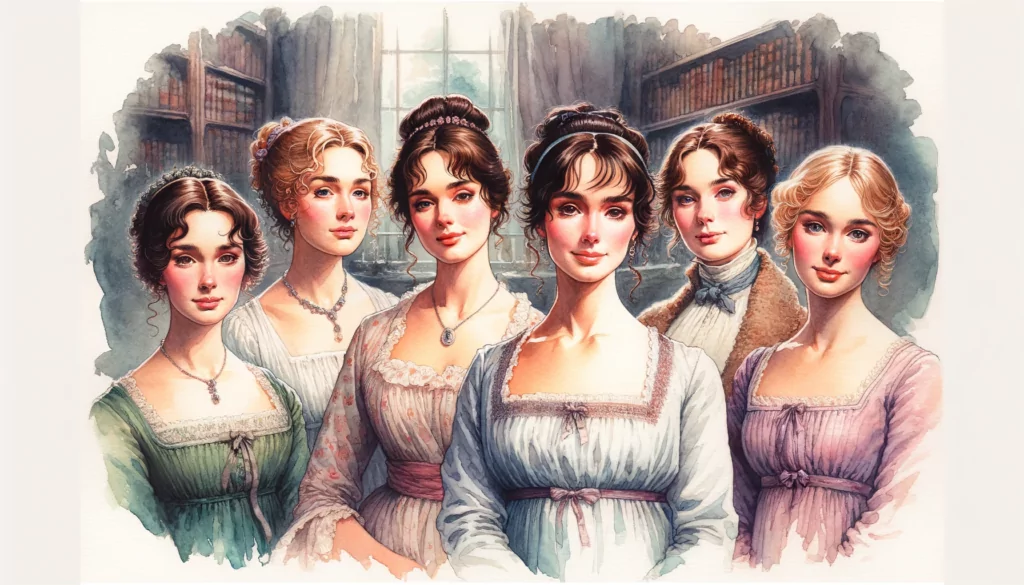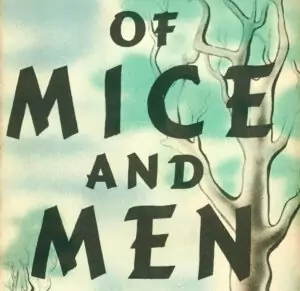The following review example can serve as a guide for students trying to find inspiration when writing an assignment.

✅ AI Essay Writer ✅ AI Detector ✅ Plagchecker ✅ Paraphraser
✅ Summarizer ✅ Citation Generator
A true literary page-turner stands the test of time. Jane Austen’s masterpiece – Pride and Prejudice – has touched many readers and left a trace in the heritage of literary works. To these days, theatrical productions, film adaptations, publishing houses, and modern creators such as Booktubers drive inspiration from this iconic novel.
Not another love story, P&P’s main characters transcend the conventional “arc of love/hate at first sight” development. Instead, a female writer daringly describes vital issues from marriage and social class to feminism, family connections, and rebellion. Needless to say, the Pride and Prejudice themes are still relevant today.
Social Class and Marriage
What is the theme of Pride and Prejudice? People’s connections and relationships. Pride and Prejudice greets the readers in the first chapter with an acute issue of the 19th century – social class. Austen wittily puts on paper how an emotional and irrational mother of 5 daughters – Mrs. Bennet – strives to find them a perfect rich husband. Yet her endeavors are not appreciated highly by the nobility of the high class. Seemingly silly at first glance, Mrs. Bennet is following her own experiences with marriage and hoping for better outcomes for her children.
She is the opposite of her spouse, Mr.Bennet who appears to be level-headed and rational. He listens to the brain, not the heart. An intellectual man as he is depicted with the most ironic vice – laziness of action. But Mr. and Mrs. Bennet do seem to see eye to eye. They both have an interest in Mr. Bingley as a potential husband for one of their daughters.

Mr. Bingley and his friends, true upper-class citizens, are a “new talk” on a Sunday morning in church. But there is more, not only do they brew the spread of rumors among the townsfolks, Mr. Bingley and his best friend Mr. Darcy become the “on dit” in the Bennet’s household. Both titled gentlemen fall in love with two older daughters but have rather different courtesy style preferences. For instance, Janne’s grace and angelic beauty enchant Mr.Bennet; while Elizabeth’s boldness and straightforwardness blow away Mr. Darcy. From this point on, the author elaborately weaves a narrative that explores themes of manners, upbringing, morality, and marriage in the society of the British Regency.
Romance
The love spark gradually evolves between Mr. Darcy and Elizabeth. Both main characters blindly believe in bearing the difference while they are the same: ambitious, free-spirited, and honest. Lizy and Fitzwilliam do indeed walk the “hate at first sight” trope but only because their weaknesses sometimes outshine their virtues. Snobbish blue-blooded Darcy and stubborn middle-class Elizabeth mold themselves into better versions before saying how deeply they admire each other. To help them shape and grow, Austen filled their lives with other love interests, impeding aunties, trying life events, and past enemies in the faces of Mr. Collins, Lady Catherine de Bourgh, and Mr. Wickham.
The author cherishes pure love but always remembers to bring readers to reality by portraying other sides of romance. Take Lydia Bennet, the youngest in the family, who is desperately searching for love and finds it where it is least expected. A pampered child is foolishly enamored by a mysterious soldier with selfish intentions – Mr. Wickham. The love union is doomed to be tragic. Not only does Lydia marry a man of a lower social status but she also elopes, bringing disgrace upon the family. The Bennets heard judgments and faced biased looks before their name was justified by the efforts and connections of Mr.Darcy.

The novel’s edifying conclusion is that the love story between Darcy and Elizabeth perfectly portrays that true love is capable of withstanding any life obstacles. Most significantly, pure feelings are an excellent nudge to self-improvement. Jane Austen skillfully embedded the moral of romance and partnership in the title of her Regency novel. After all, Lizy learned how to fight prejudice and Fitzwilliam learned not to be stuck up.
Women’s role in society
The never-ending battle for equality seems like something we face daily living in the 21st century. But for the folks of yesteryear – the Victoria Age – Austen’s bold pro-feminist vision was something fresh, forbidden, but very needed.
All the author’s female characters are unique and multifaceted. P&P’s women are perfect proof of these words. All five Bennet sisters are so entirely different that only their surname will give strangers the idea of a family bond. From the youngest to the oldest, the author gifts her ladies with mere mortal virtues and vices: kindness and judgment, playfulness and childishness, level-headedness and irrationality, a thirst for love, and a pursuit of rational affection.
The main protagonist – Elizabeth Bennet – carries a lot of character development on her shoulders. She is the modern definition of beauty and brains. Being a bright and good-looking lady, Lizy knows her worth and claims to never get intoxicated by the social status of her future spouse. On the other hand, she promises to build an emotional bond with her beloved one.

A contrasting figure to Elizabeth is her best friend Charlotte Lucas. Wise and pragmatic Lotty does not follow her heart. Instead, she makes pragmatic life choices and settles with a man whom she finds secure and safe. These two females are a perfect example of multi-layered characters who were ahead of their time with their courageous thoughts, actions, and views.
Austen gives readers a powerful female from the company of upper-class individuals – Lady Cathrine de Bourgh. This overly orthodox woman is shown to use her name and status to patronage everyone around her and tell people what is the right choice for them. She carries herself with confidence and makes everything considers herself the beacon of societal norms and decorum. However, the author lets the readers look past her social status and exterior when Elizabeth confronts her. By colliding two worlds, Austen meant to show how little social rank can mean when compared to a person’s worth and ability to protect personal boundaries.
Family
Family bonds are recognized in Pride and Prejudice. Not because family plays a grand role in people’s lives but because it influences them too. Dynamics and relationships with the loved ones impact everyone in the novel.
For instance, Jane and Elizabeth are a textbook case of sisterhood. They are always there for each other: in sorrow and happiness, and in the most challenging life events. When Jane’s relationship with Mr.Bingley gives a first crack, and when Elizabeth experiences mixed signals from Mr. Darcy, or even when Lydia carelessly runs off – the sisters support each other’s backs.
But if older sisters seem to know a lot about caring relationships, younger ones have different upbringing patterns. Mary, Kitty, and Lydia are three younger sisters who do not seem to bear the resemblance to Jane and Lizy. Mary is introverted and bookish, while Kitty and Lydia are childish and easily influenced by gossip, people’s opinions, and the latest fads.
Mrs. and Mr. Bennet have their favorites and dedicate all their attention either to Lydia or Elizabeth. The youngest is loved by their mother because Mrs. Betten sees herself in Lydia. And Mr. Bennet admires how intelligent and logical Lizy is about everything.

While Jane’s big heart is full of love for everyone else, Kitty and Mary are left out of family and social events. It is clearly shown in the narration when girls are looking for support from their parents, they do not receive enough attention.
However, readers do not receive much information about Darcy’s family, apart from the fact that he has an overly controlling aunt, Lady Catherine de Bourgh, and a younger sister named Georgiana.
Pride and Prejudice
The main theme of Pride and Prejudice lies in the title. However, as Jane Austen intended, pride and prejudice are intricate parts of the characters’ lives that come with significant costs.
Characters like Caroline Bingley, Mr. Bingley’s sister, and Lady Catherine de Bourge exemplify pride turned to arrogance due to their wealth and social standing, making them believe they are inherently superior. Their vanity is evident in their obsession with preserving their social image.
Mr. Darcy, distinct from the others, carries a pride that is more personal and less concerned with external appearances. Initially, his high regard for social rank hinders his interactions and causes him to lose Elizabeth’s favor. Only when Fitzwilliam starts to soften his pride with empathy and understanding does he become a better person and a suitable partner for Lizy.
Prejudice in the novel refers to the characters’ tendencies to make quick and firm judgments. Elizabeth Bennet believes she’s skilled at reading character but her quick judgments often blind her to the truth. Her initial prejudice against Darcy, sparked by his snub and fueled by Wickham’s deceit, nearly costs her a chance at love. The novel suggests that while some level of prejudice or judgment is natural and can be practical, it becomes harmful when it is unreasonable and unchecked. Jane’s inability to see through the Bingley sisters’ deception almost ruins her chances with Mr. Bingley. Essentially, Pride and Prejudice reflects on the balance needed in our judgments and self-esteem. Too much pride or unbridled prejudice can lead to missed opportunities and joy.
Final Thoughts
Jane Austen’s Pride and Prejudice addresses themes such as the intricacies of social class, marriage prospects, romantic evolution, women’s societal roles, and family ties, while illustrating the personal consequences of pride and prejudice in the quest for self-improvement and true love.
*Note: When you write an expository essay, you may find additional information for your work in outside sources. You can also use the original work (book, article, etc) that you write about. In any case, site all the sources you use for your assignment. You can use tools like APA 6th edition citation generator to help you format both citations and references according to the specific formatting style.
Follow us on Reddit for more insights and updates.





Comments (0)
Welcome to A*Help comments!
We’re all about debate and discussion at A*Help.
We value the diverse opinions of users, so you may find points of view that you don’t agree with. And that’s cool. However, there are certain things we’re not OK with: attempts to manipulate our data in any way, for example, or the posting of discriminative, offensive, hateful, or disparaging material.